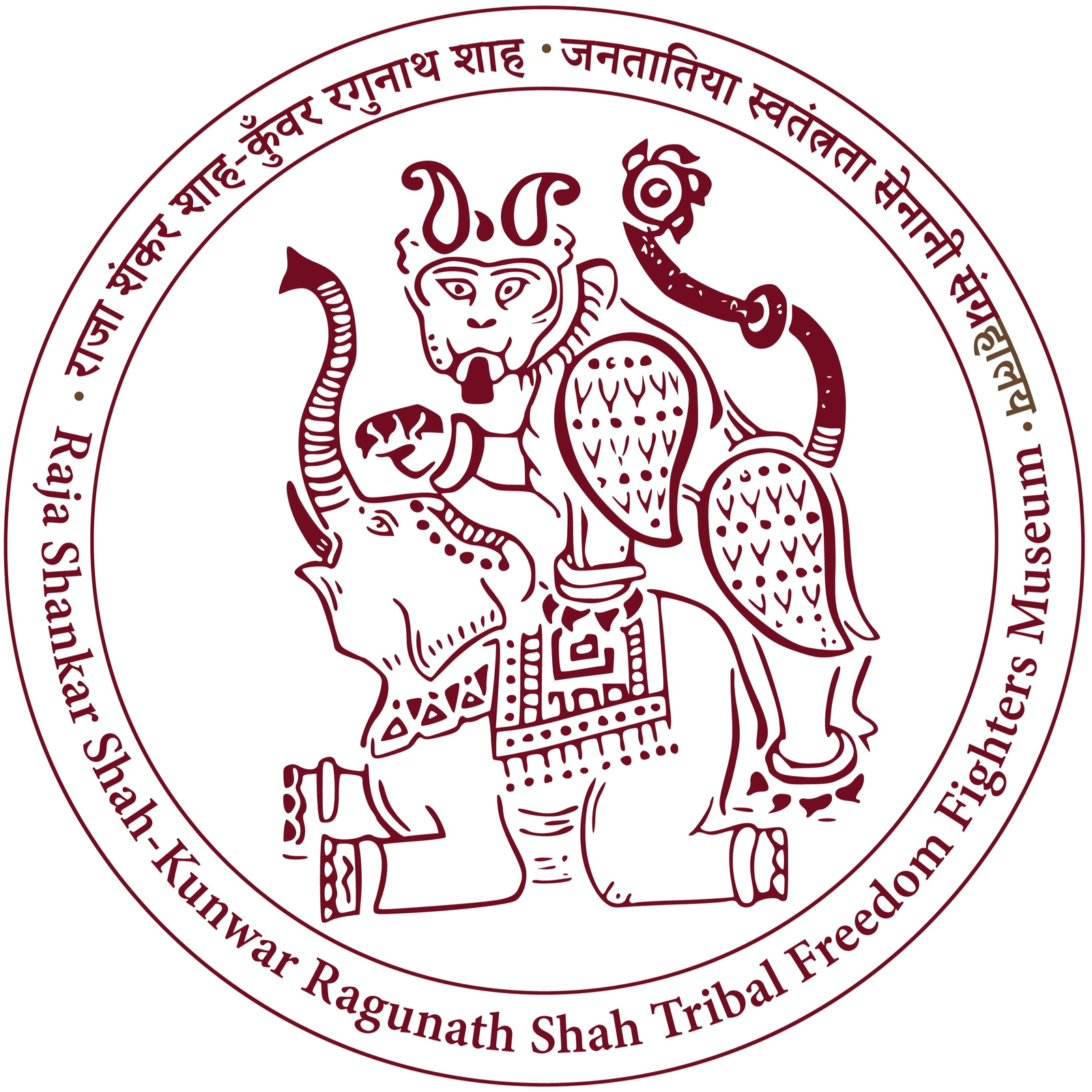Gond - A Culturally Rich Community
The country which lies between the Narmada and the Godavari rivers, and which later constituted parts of the British Central Provinces, was ruled by four powerful Gond dynasties for 400 years from the middle of the fourteenth century to the middle of the eighteenth century.
The region was also popularly called 'Gondwana', as it was largely inhabited by Gond communities. In this land, four independent Gond kingdoms arose more or less simultaneously—in the north Garha, in the centre Deogarh and Kherla and in the south Chanda. The Gonds of Chanda divided themselves into four endogamous tribes: the Raj Gonds, the Maria or Madia Gonds, the Dhurve Gonds, and the Khatulwar Gonds. There were also other minor sub-tribes, such as the Koyas, the Gaitas, the Pardhans and the Kolams, who would not class themselves with either of the above tribes and were few in number. These sub-tribes all spoke dialects of the Gondi language.
When the Delhi Empire began to break up during the fifteenth century, new rulers, such as the Gond Rajas, were able to assert their power. Gond legends speak a lot about the expansion of the dynasty from south to north. Particularly there are romantic stories on the change of capital from Sirpur to Ballarshah and then to Chanda. Apart from these legends, the ruins of the magnificent forts of Sirpur, Manikgarh, Utnur, Nirmal, Rajura, Vairagarh, Partabgarh, Ballarsha and Chanda all illustrate the extent and power of the Gond rule in the region.
The legends also ascertain the sovereign rule of the Gond Rajas of Chanda. It is said that Surja Ballal Singh visited the Delhi ruler and fought for him in a war against the Rajput chief of Kaibur. Impressed by his achievements, it is said that the Delhi ruler granted him rights over a huge territory, and conferred on him the title of Sher Shah, after which he was called Sher Shah Ballal Shah. His successors used the title “shah” as a suffix to their names.
According to the standard historical narrative, then, the first wave of modern impact in Central India began in the 1600s. Previous to the incursions of Rajputs, Marathas and Mughals, much of the region today known as Madhya Pradesh had long been an ambiguously defined area known as Gondwana. For hundreds of years, from at least the 12th to the 18th centuries, a series of Gond kingdoms reigned over the area.
By the late 1700s, Raj Gond power had been all but supplanted by the Marathas. The anthropologist Stephen Fuchs, for example, describes: ‘In 1781 the last Gond ruler of Mandla, Narhar Shah, was tortured to death by the Maratha general Moraji, and Mandla became a dependency of the Saugor Marathas. In 1799 Mandla fell to the Bhonsla king of Nagpur, till in 1818 the British took over and assumed the rule also over Mandla’. It is in this period that many of the Gonds and other independent peoples of Central India began their retreat into the forests and hills as a means of escape and resistance.
Map of the Gond Kingdom

Family Tree
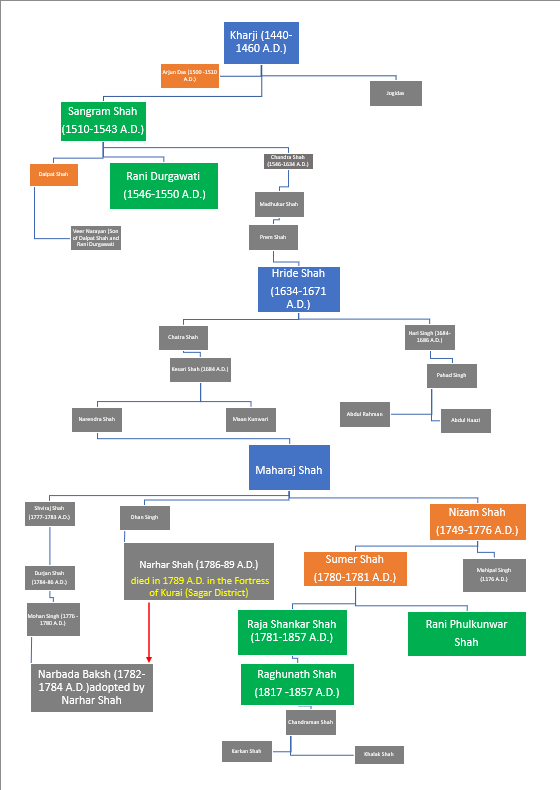
Raja Shankar Shah
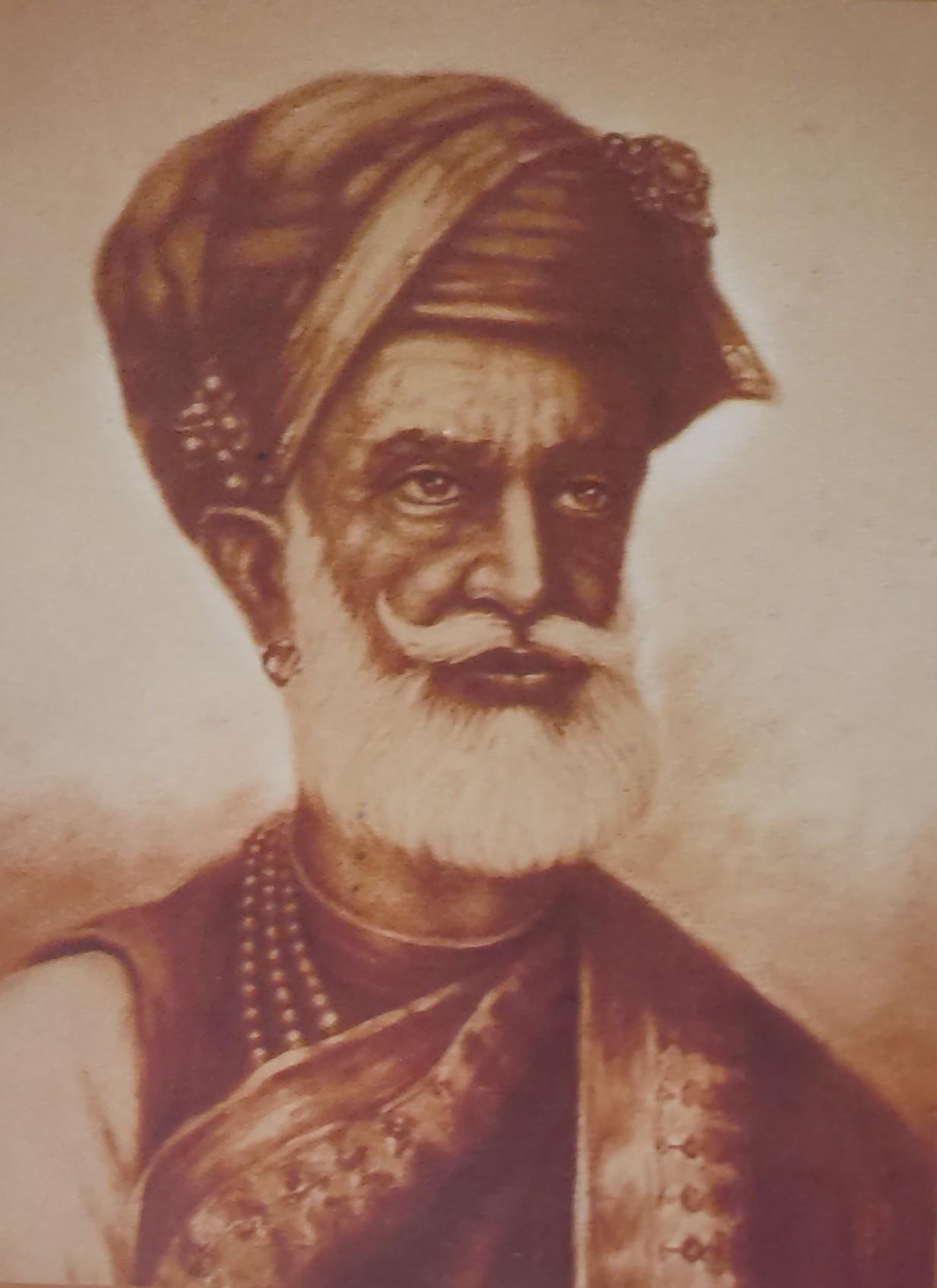
Raja Shankar Shah was the descendent of the illustrious Raj Gond Kings of Garha Mandla. He was the grandson of the last independent king Nizam Shah and the son of Sumer Shah. By the time of Raja Sumer Shah, Mandla was under the suzerainty of the Marathas and the Raja was ruling over the region under their authority. This was the time when a succession struggle was going on between Raja Sumer Shah and Narhar Shah.
Nizam Shah, the King of Garha Mandla died in AD 1776, after a reign of 27 years. After his death, there were several parties trying to claim the throne. With the help of the Queen dowager Bilas Kunwar, Narhar Shah was placed on the Masnad in AD 1776. Sumer Shah, the natural son of Nizam Shah, disputed the succession. Sumer Shah called in the aid of the ruler of Sagar, Visaji, to support his title. The final result of the succession struggle was that the Raj was entirely wrested from the family and usurped by the ruler of Saugor. Narhar Shah was confined in the fort of Khurai, where he died in 1789. Sumer Shah was kept in prison at Jatashankar, where he was kept during the whole period of the Sagar ascendancy.
On the acquisition of this province by the Nagpur state, Sumer Shah was released from restraint by Benaik Rao who gave him a village as Jagir for his subsistence. It is commonly believed that Shankar Shah and Raghunath Shah were born in Mandla fort. However, according to the Gazetteer of the Central Provinces, 1867, Sumer Shah was honorably employed at Sagar. Sumer Shah called his family to Sagar, where he had a son name Shankar Shah. The mother of Raja Shankar Shah was Tejkunwari dev.
Sumer Shah attempted in 1804 to recover the Raj through the assistance of Nagojee, an officer of Holkar, and after being repulsed in advancing towards Jubbulpore, he meditated an invasion of the Dukhanteer fort, but was intercepted and put to death, by Scindhia's officer at Deori, at the instance of the Raja of Nagpur.
Since the death of Raja Sumer Shah, his only son Raja Shankar Shah led a wandering life. He stayed at the camp of the Pindari leader Ameer (Meer Khan) for a long time. At the time, Ameer Khan was in the service of Jaswantrao Holkar of Malwa. Raja Shankar Shah accompanied Ameer Khan in his invasion of the Mandla region in 1809. It is said that Raja Shankar Shah was given assurance by Ameer Khan to be reinstated in the lands of his ancestors. After driving off Narayen Rao, the subedar of Jabalpur, Raja Shankar Shah was proclaimed king and placed at the gaddi at Jabalpur with the assistance of Ameer Khan. But the Pindaris were driven off by a large force sent by Nagpur at Jahura at 1810 and in 1817, the territory of Mandla and Jabalpur were ceded to the British on 13th June 1817 by treaty with Peshwa Baji Rao II.
Raja Shankar Shah later on went away to manage his property in Sagar for 2-3 years after which he moved to Jabalpur around 1818. According to CA Molony, the Commissioner of Nerbudda, the small Jagir in Sagar was assigned to Sumer Shah, which generated a revenue of “not more than 2500 rupees”. Raja Shankar Shah had also received voluntary contributions from several Bundela Chiefs.
Raja Shankar Shah vs Narmada Baksh: Motive for Rebellion
Narhari Shah had adopted a child, which he named Narmada Baksh. Laxman Kunwari, the youngest wife of Narhari Shah took Narmada Baksh with her to Jabalpur after 1818. After the legal heir of the Garha Mandla Kingdom, Narmada Baksh, disappeared, Rani Laxman Kunwari recognized the son of Raja Shankar Shah, Raghunath Shah as the heir of the kingdom However, the return of Narmada Baksh to Jabalpur, sparked a legal dispute between Narmada Baksh and Raja Shankar Shah in 1830.
Trial of Raja Shankar Shah and Raghunath Shah
After the arrest and imprisonment of Raja Shankar Shah and his son, the situation in Jabalpur rapidly became alarming for the British administrators. Some of the sepoys of the 52nd Regiments made an attempt to rescue the Raja Shankar Shah and Raghunath. On the second night of the arrest, Commissioner was made aware of a plan hatching the rank and file. The Madras detachment was stationed around the building under arms. During the night, few shots were fired in the 52nd lines, a bungalow close to the lines was burned down, and eight sepoys deserted with their arms.
The authorities, however, took precautionary measures to render their rescue impossible. They tried them for plotting against the British raj. A Commission, composed of the Deputy Commissioner and two officers, was held on the following day for the trial of Raja and his-son.
As the proof of their complicity in the plot for the destruction of the Europeans being conclusive, they were sentenced to death by being blown from guns.
Copies of the original trial documents have been complied. The original documents are in Urdu, however, translation has also been acquired.
Shankar Shah, the Poet King
As the anticipation for the uprising 0f 1857 grew, Raja Shankar Shah decided to join the rebellion with the aim of ending British occupation in his ancestral lands. A keen poet, the Rajah wrote a powerful poem dedicated to the goddess Chandi at Purba, now known as the Mallah Devi, exhorting the goddess to help him and his compatriots in achieving this aim. In no uncertain terms, the eloquent Raja implored his goddess to assist him in destroying the British. It is important to note that this poem became the evidence for the trial of Raja Shankar Shah after his arrest. The poem revealed uncompromising wrath at East India Company and its depredations felt by the Raja and it shook the Britishers to their core. The poem written by the Raja Shankar Shah:
Kunwar Raghunath Shah
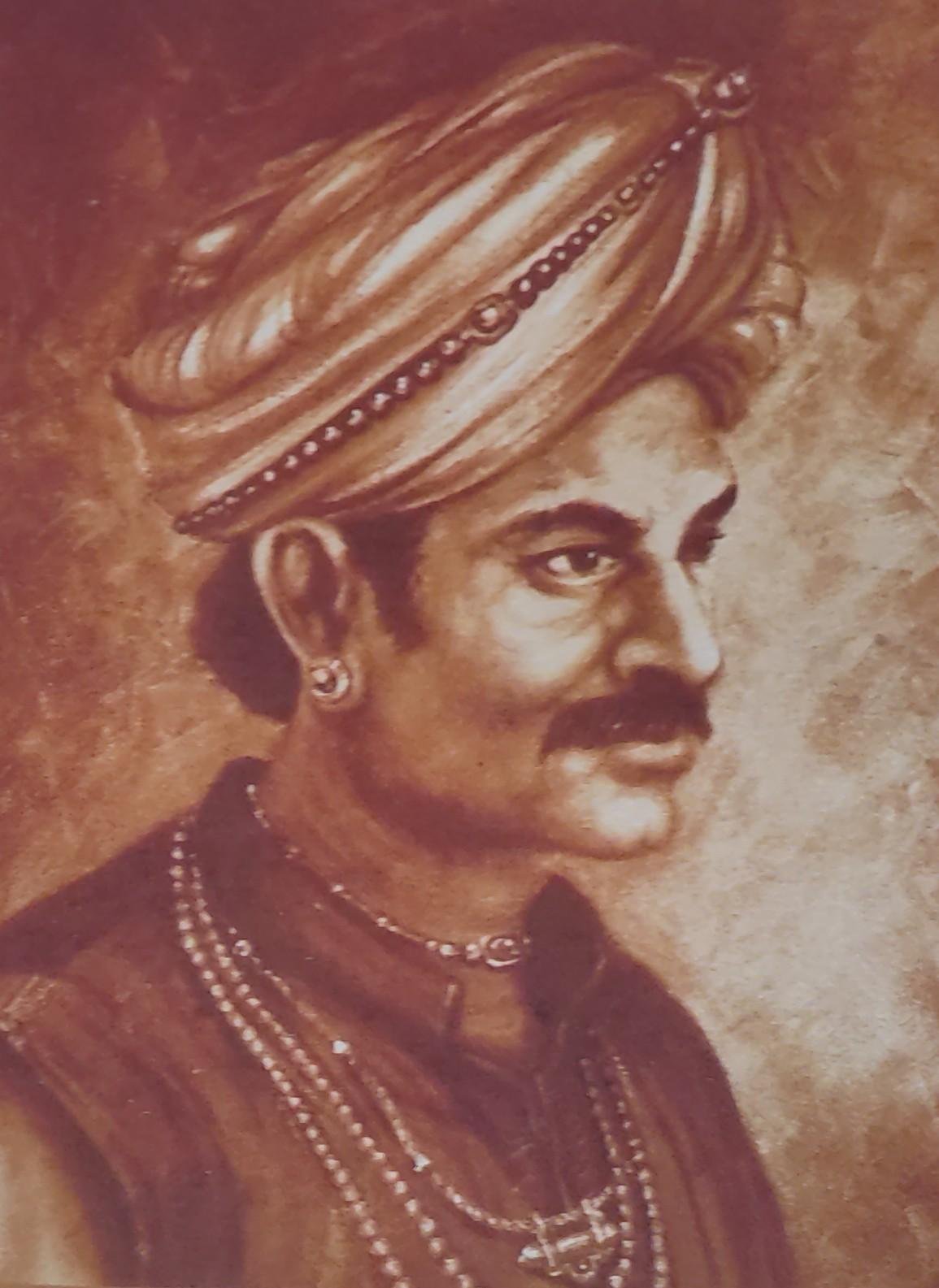
Kunwar Raghunath Shah was the son of Raja Shankar Shah. He was married to Man Kunwar Bai and had two sons Lalju and Laxman Singh. After the disappearance of Narmada Baksh, Rani Laxman Kunwari had recognized Raghunath Shah as the legal heir of the Garha Mandla Kingdom. With the return of Narmada Baksh in 1830, the Gond family was involved in a legal dispute for Narmada Baksh claimed to be the rightful heir to the erstwhile kingdom.
Along with his father, he took part in conspiring against the British in Jabalpur and was sentenced to death by the British. He is known in the Garha Mandla region as a fearless martyr, who sacrificed his life for freedom.
The Gond Queens
Rani Durgavati
She was married to Dalpat Shah, who was a Chandela Rajput prince. Rani Durgavati moved her capital to Chauragarh because it was safer than Singhorgarh. Rani Durgawati made the kingdom extremely prosperous, it was said that the people paid their taxes in gold in her reign. She battled against Mughal Emperor Akbar's forces lead by Asaf Khan I in 1564. Though she lost, she is remembered as a war-heroine and is still praised in the areas of the former Garha kingdom. The Mughals acquired immense booty, including many elephants from this victory.

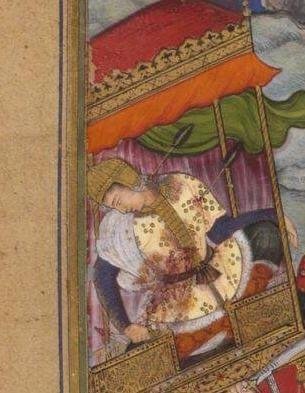
A depiction of Rani Durgavati in Akbar Nama. This painting by the Mughal court artists Kesav and Jagannath from the Akbarnama (Book of Akbar) depicts the heroic death in battle of Rani Durgavati, ruler of Garha Katanga in Central India from 1550 to 1564. She was a princess of the Chandel dynasty of Mahoba, and ruled as regent for her son Bir Narayan. She was a capable and benevolent ruler as well as being a courageous leader. Her army consisted of 20,000 cavalry and 1000 elephants, and had repelled other attacks on the kingdom, but her forces were easily defeated by the overwhelming size of the Mughal army. This painting shows her at centre left, struck by arrows. She pulled them out, but then killed herself rather than submit to Akbar. This painting is the right half of a double-page illustration, the left half being Museum no. IS.2:36-1896. The image is overlaid by two panels of text extending from the left-hand margin.
Rani Phul Kunwar
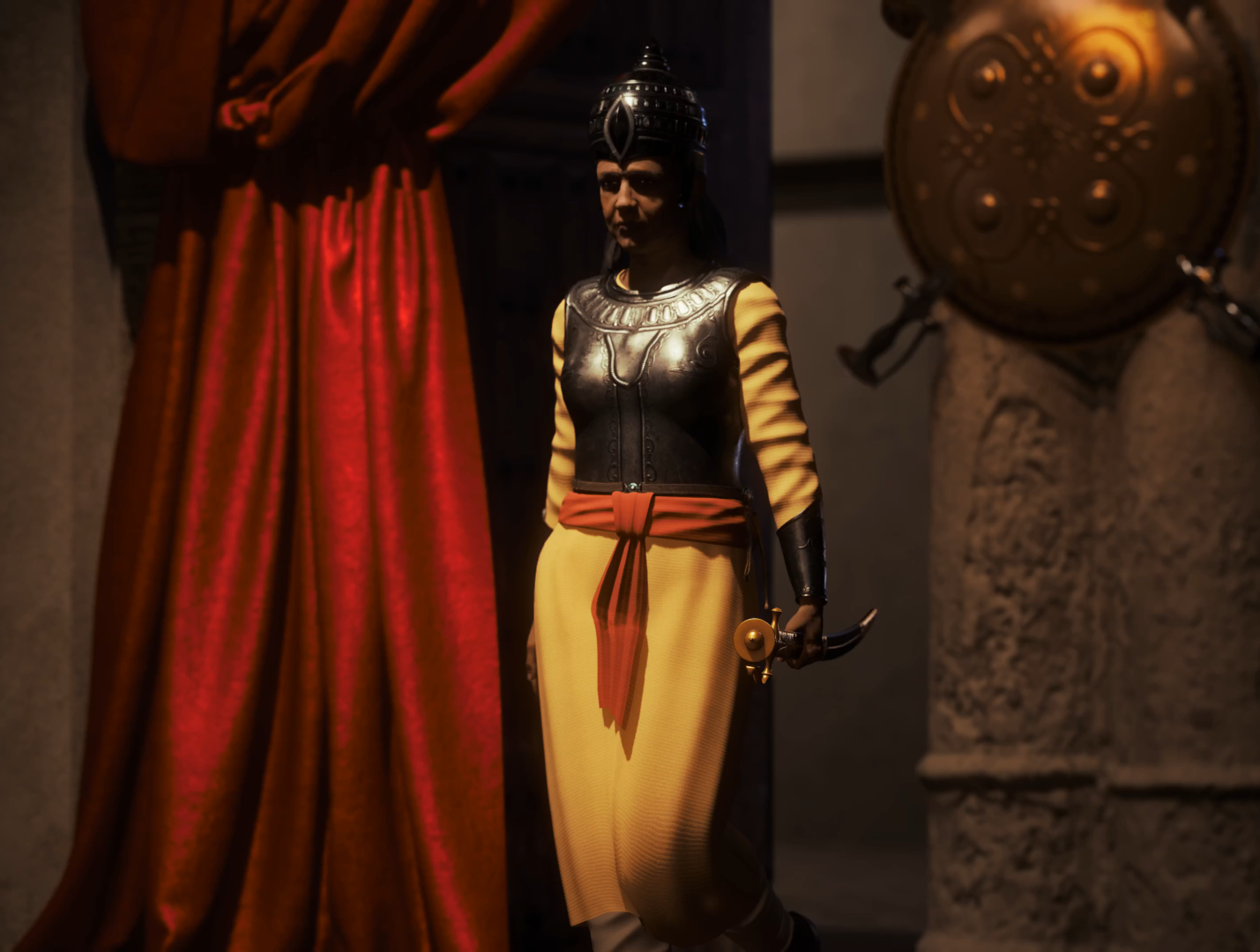
Rani Phul Kunwar Bai was the wife of Raja Shankar Shah and the mother of Raghunath Shah. A brave warrior, the Rani is remembered by the locals for her stiff resistance against the East India Company. Some Gond communities memorialize the Rani though songs remembering her grand wedding ceremony and her fight against the British.
It was Rani Phul Kunwar, who gathered the scattered remains of Raja Shankar Shah and Raghunath Shah and performed proper death rites on 18th September, 1857. After the death of Raja Shankar Shah, Rani Phul Kunwar seized the fort of Ramgarh, and took part in several skirmishes. At length being closely pursued, she dismounted from her horse and plunged a sword into her own bosom, following the footsteps of her great ancestor Rani Durgavati. She was taken into the English camp, where she died.
Rani Man Kunwar Bai
Rani Man Kunwar Bai was the wife of Kunwar Raghunath Shah and had two sons Lalju and Laxman Singh. Man Kunwar Bai had a brother named Aman Singh and an uncle named Pran Singh. When Raghunath Shah was executed in Jabalpur, Man Kunwar Bai was in her native village “Arjuni” near Hatta Damoh. Angered by the terrible news, Man Kunwar Bai and her relatives raised the flag of rebellion in the region. Lalju, the grandson of Raja Shankar Shah, Aman Singh and Pran Singh joined the rebels from Jatashankar in capturing and looting the police station at Batiyagarh.
Architectural Legacy of the Raj Gond Kingdom of Garha Mandla
Gond rulers had built architecturally splendid palaces and forts throughout their kingdoms, and even founded several cities (e.g. the founding of the city of Nagpur, for instance, is attributed to the Gond Raja Bakht Buland Shah of Devagad in the year 1702. Nagpur fell to the Marathas in 1742).
The Garha-Mandla kingdom was earlier a small territory which witnessed rapid expansion under the rule of Sangram Shah. He captured territories like Narmada Valley, Bhopal, Sagar, Damoh and most of the Satpura hills. He conquered 52 forts called Garh to strengthen and spread the Gond territory. The Chauragarh Fort in Narsinghpur was built in the honour of conquering 52 forts. Sangram Shah is best known as a patron of arts and literature and he had great knowledge of Sanskrit. Rasratnamala was written by Sangram Shah. At the time of Sangram Shah the capital of Garha kingdom was Singhorgarh.
The 52 Forts of Garha Mandla Kingdom
| 1. Garha | 2. Marugarh | 3. Pachelgarh | 4. Singorgarh |
| 5. Amoda | 6. Kanouja | 7. Bagmar | 8. Tipagarh |
| 9. Raigarh | 10. Pratapgarh | 11. Amargarh | 12. Deohar |
| 13. Patangarh | 14. Fatahpur | 15. Nimuagarh | 16. Bhanwargarh |
| 17. Bargi | 18. Ghunsour | 19. Chourai (Chhindwara) | 20. Dongartal |
| 21. Karwagarh | 22. Jhan Jhangarh | 23. Laphagarh | 24. Sontagarh |
| 25. Diyagarh | 26. Pawalgarh | 27. Shahnagar | 28. Dhamoni |
| 29. Hata | 30. Madiado | 31. Garhakota | 32. Itawa Bina |
| 33. Garhapahra | 34. Damoh | 35. Rahlirangir | 36. Shahgarh |
| 37. Khimlasa Khurai | 38. Garh Gunnor | 39. Barigarh | 40. Choukigarh |
| 41. Rahatgarh | 42. Makdai | 43. Karobag | 44. Kurwai |
| 45. Raisen | 46. Bhonraso | 47. Bhopal | 48. Upatgarh |
| 49. Deori | 50. Gorjhamar | 51. Bankagarh | 52. Panagar (Narsinghpur) |
Chauragarh Fort
Situated on a peak of Satpura range. This fort has been constructed by using big and small stone blocks and lime and mud mortar, of which the remains of fortification wall as three entrances can be seen even today the Rewa Kund and ancient pyramidal temple housing a broken sculpture of Narsingh belong to the Kalachuri period, while the fort can be attributed to the Gond rulers of 16th century A.D. in the ruins inside the fort stand Ranital, barrack for keeping the prisoner, amphitheatre and the palace of Gond King Premnarain in 1818, after the downfall of Gond rulers the Britishers damaged the fort very badly. There are also the remains of the buildings constructed during the Maratha period, which stand in between the Ranital and King’s Palace. This was very important fort during the reign of Gonds and Marathas. It was built during the period of ruler Sangramshah.
Moti Mahal
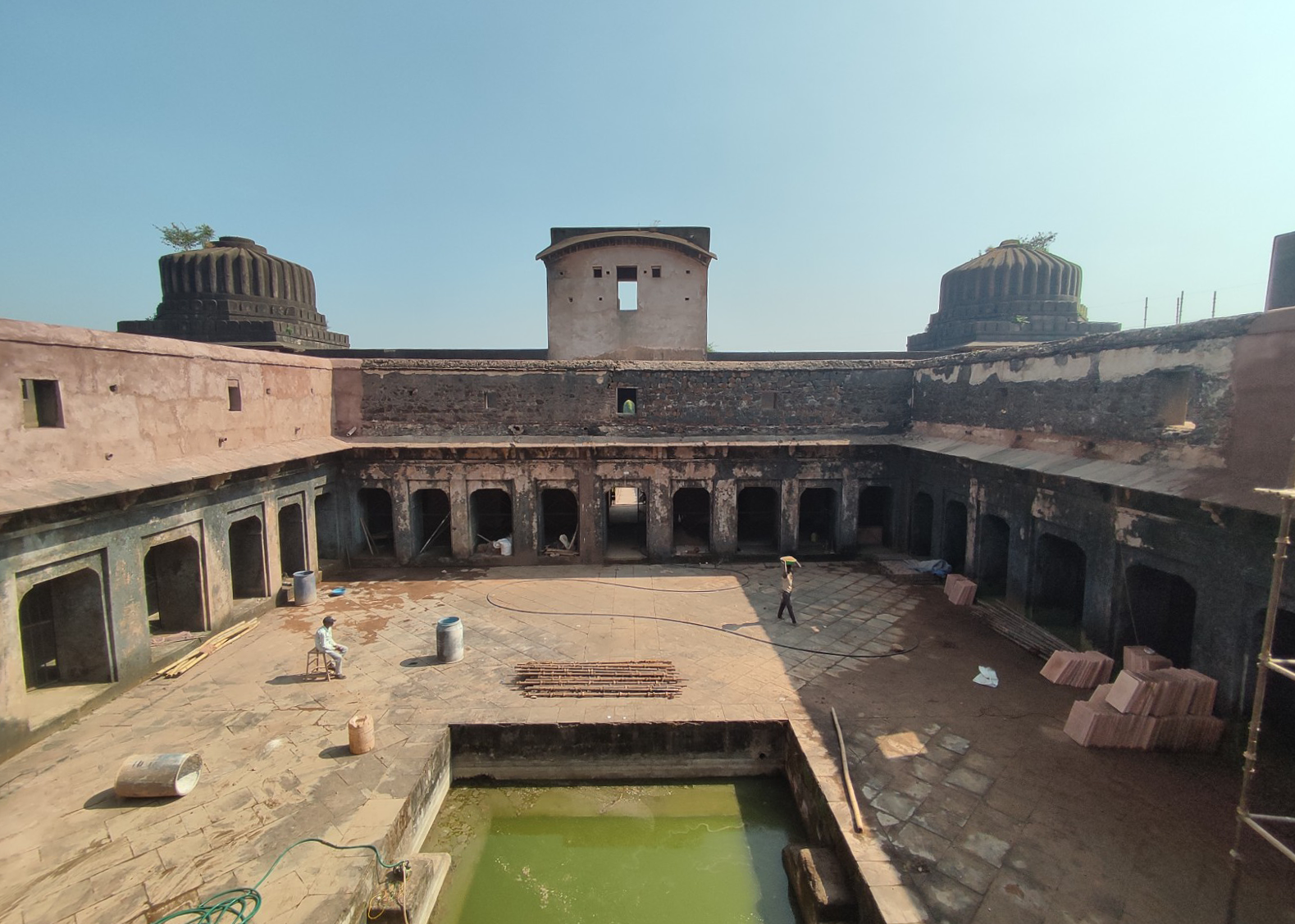
The Moti Mahal stands as a bridge to the past, it was constructed by the Gond King, Hriday Shah, also referred to as Hridayasaahi or Raja Hirde Shah or Hridayshah. He is believed to have been the last of the great Gond Kings who ruled over Northern Gondwana, known as Garha Mandla. Moti Mahal was constructed by King Hriday Shah.
The foundations of the fort were laid in the year 1651 and the construction was completed in 1667. The Moti Mahal was the power centre of the kings of Northern Gondwana for about 85 years before the capital was shifted to Mandla.
Rani Mahal
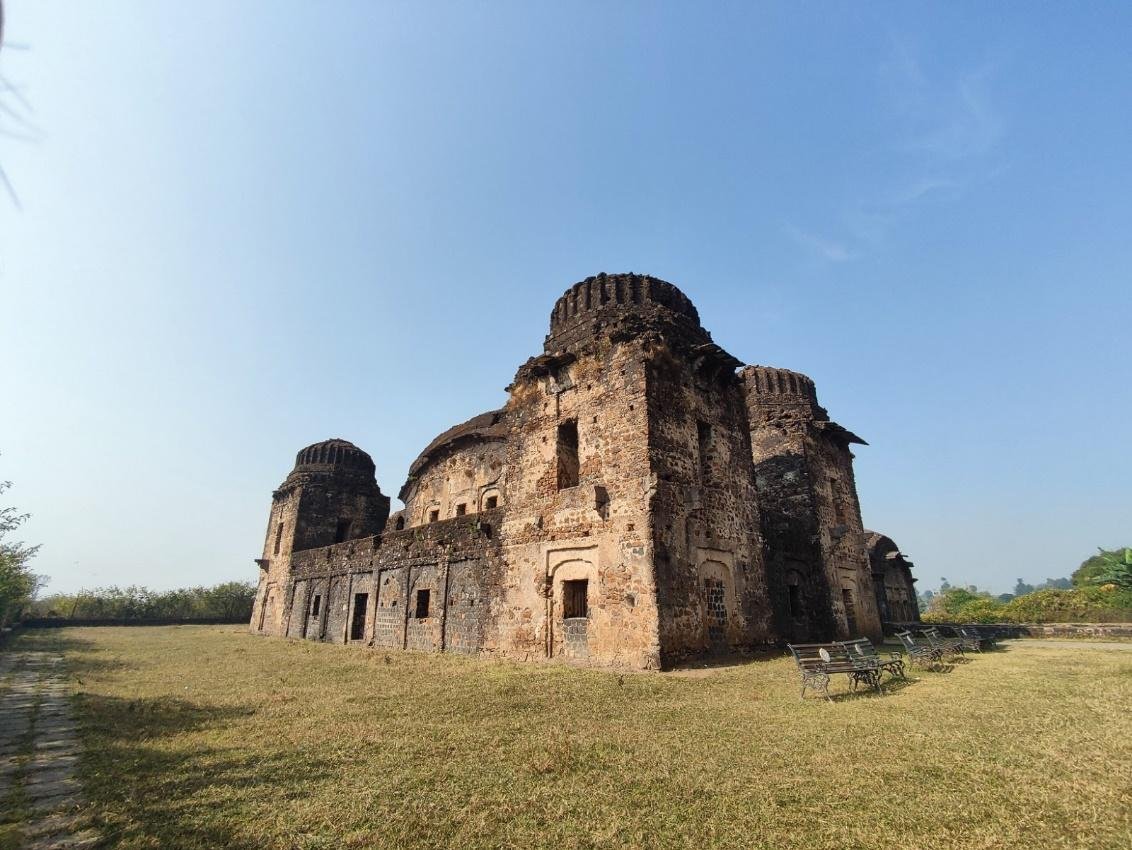
Badal Mahal
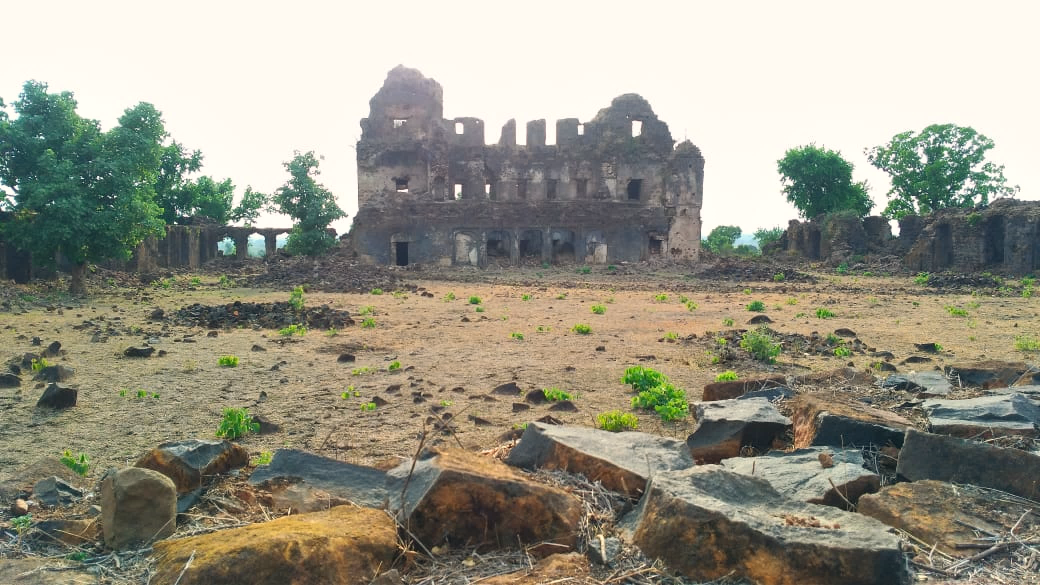
Kothi of Rai Bhagat
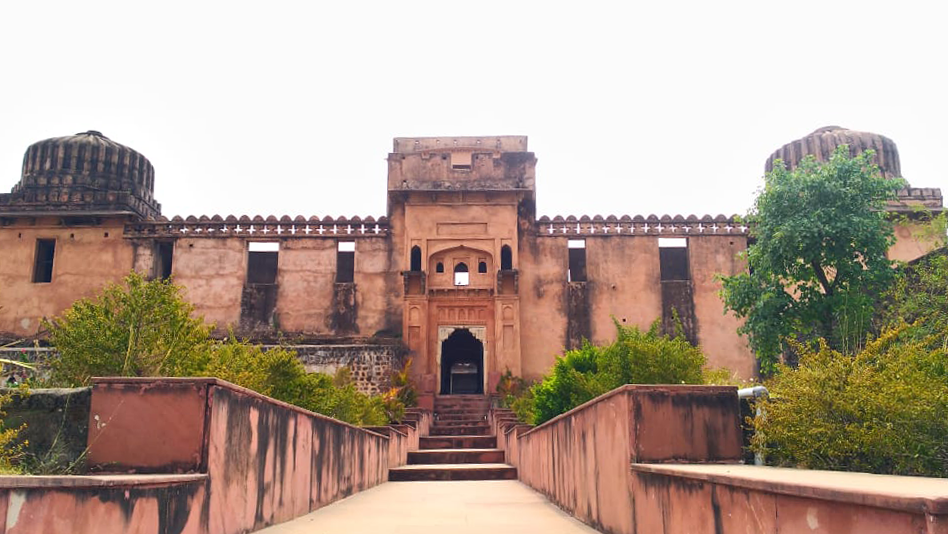
Madan Mahal, Jabalpur
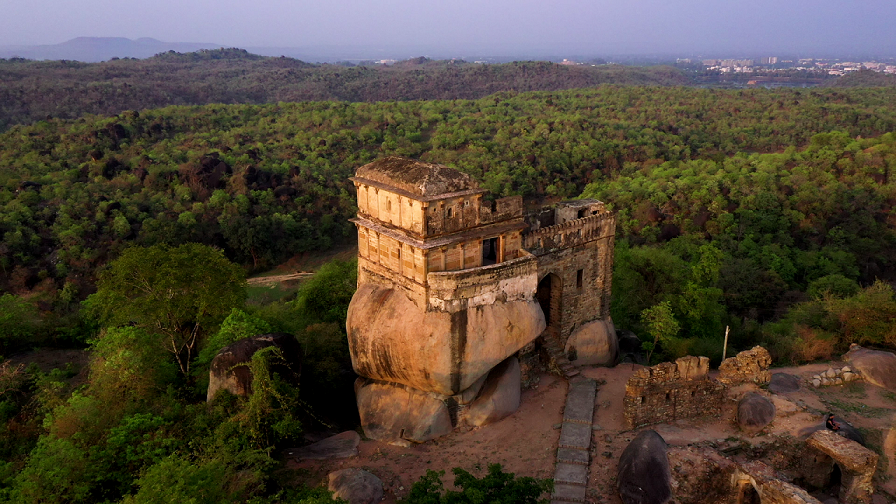
Water wisdom of the Gonds of Garha Mandla

Evidence shows that these dynasties managed their water based on a scientific understanding of the water resources available in the area. Water in those times was mainly stored in tanks as stand-alone tanks or a chain of tanks. Many of these tanks and stepwells exist even today and have been found to be nearly 500 years old. They have been constructed on suitable geological formations, built on gentle to moderate slopes or across small drainage lines.
Many of the tanks and step-wells constructed during that period are still in a good condition. One of the important technological peculiarities of the tanks is the way in which the storage capacity of the tank is designed and the surplus water is released from the waste -weir.
Classification of tanks in Garha Mandla
The tanks can be classified into:
- Storage tanks – These tanks have an impervious bed and side walls and are perennial in nature because the main source of their water is rainfall while the contribution of ground water is negligible.
- Recharge / Percolation tanks – These tanks have mostly been constructed on weathered granite (pervious formation). They have optimum depth and are linked to the local ground water table. They get filled due to run-off and the release of groundwater.
- Chain of tanks – These are storage and or recharge tanks constructed along the same drainage line that meets different formations and slopes. Example – Maharajtal, Kolatal, Deotal, Supatal and Gangasagar.
The Gonds understood the water bearing properties of geological formations (geological control) and utilised this understanding in selection of the sites for tanks and step-wells. Majority (58 percent) of the tanks that exist today from the Gond period are storage tanks and were built on impervious alluvial soil. Of these, twenty tanks are recharge tanks. Of these, thirteen recharge tanks are built on porous and permeable weathered granite, six are built on porous and semi-permeable sandstone and only one tank has been constructed on less permeable Lameta formation.
All the tanks were built based on sound engineering, which can be seen from the construction of waste-weir that continues to demonstrate exemplary silt disposal mechanism and is capable of negotiating surplus run-off. Bund width is adequate to withstand the water thrust at Full Tank Level. Local weather and the water bearing properties of the geological formations were also precisely known during those times. Capable and experienced masons were employed for the construction. Matchless combination between purpose, facilities and intention existed which was used to plan the appropriate sizes and number of water bodies. Need based construction of tanks ensured universal availability of water in the region. The tanks still continue to provide water even today in Garha area, Jabalpur.
This indigenous water wisdom of Gonds, particularly the relation between storage capacity and disposal of run-off from waste-weir is relevant even today and needs to be highlighted and discussed on scientific platforms and adopted in maintenance of modern ponds, tanks and reservoirs.
Ramnagar Palace Inscription
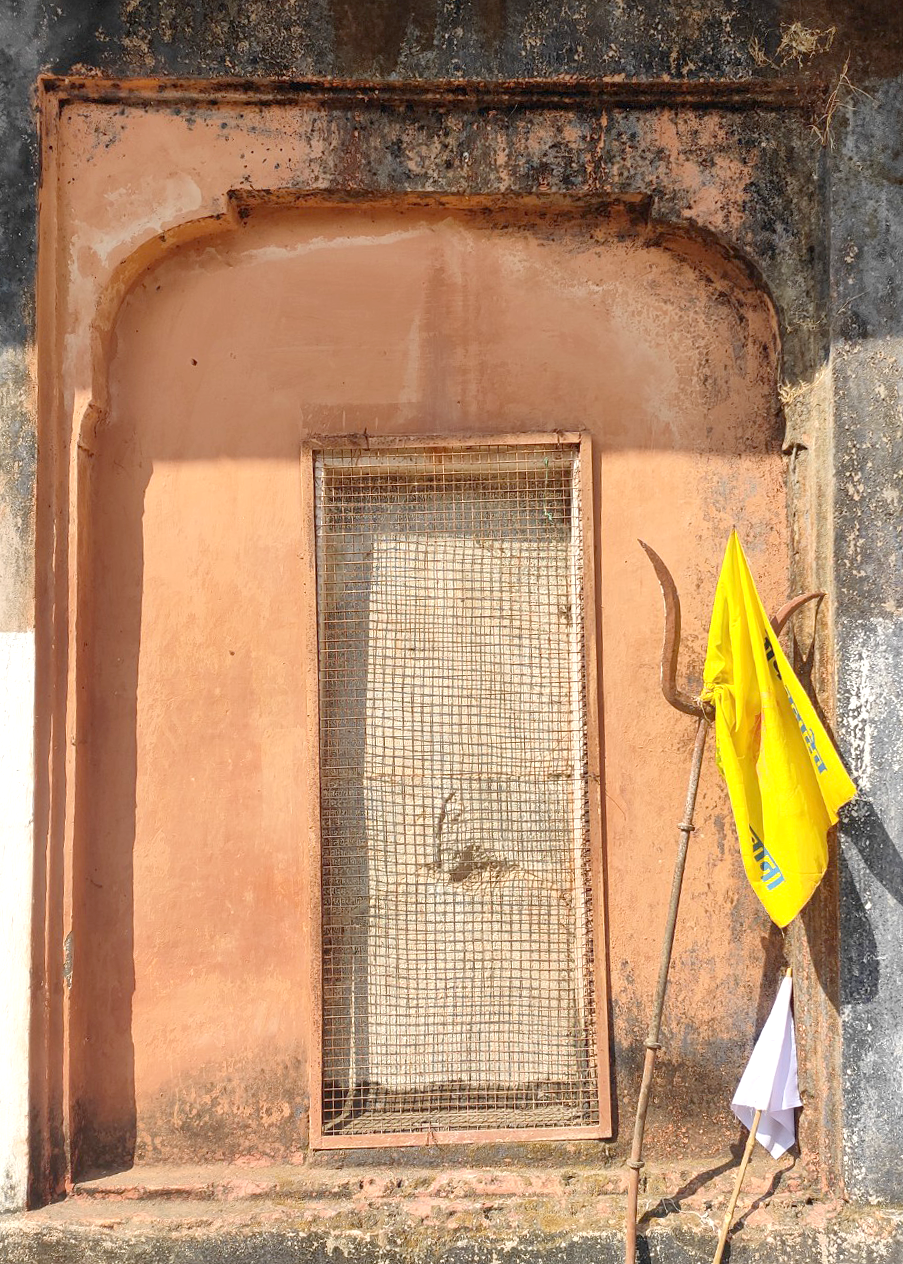
Ramnagar is 10 miles from Mandla on the bank of the Narmada river. The inscription is affixed to the Moti Mahal, a palace built by the Gond king Hirdesah, but it originally belonged to a temple of Vishpu, about 100 feet from the Moti Mahal. It gives the genealogy of the Gond kings for as many as 5a generations up to Hridayesvara or Hirdesah. Ramnagar Palace Inscription is believed to be the first inscription of its kind and is celebrated today as the first tribal inscription.
Inscriptions
री गणेशाय नमः श्री सुदंश्री सुदंर त्रिविक्रमों जयति ।
इत्थम्भावने केनाऽपि हलविज्ञाताय विप्लवे स्वमात्रेणेव कतिधा भवते भवते नमः ||1||
यादवरायक्षितिभूद् बभूव गुणनीरधिर्गढादेशे सूनुर्माधवसिंहस्तस्य यतो ऽभूज् जन्नाथः ।। 2 ।।
गोपालसाहिरस्मात् समजनि भूपालसाहिरतः ।14।।
तस्माद् गोपीनाथस्ततस्तु नृपरामचंद इत्यासीत्
अजनि ततो रघुनाथतस्य सुतो रूद्रदेव इत्यासीत्। तस्य च विहारिसिंहः सूनुर्नरसिंहदेव इति तस्य 11311 सन्यो ऽस्य सूर्योनस्तस्य सुतो वासुदेव इत्यभवत्।
सुरतान सिंहनामा सनुरभूद रामचंदस्य ।।5।।
हरिहरदेवस्तनयस्तस्याऽऽसति कृष्णदेव इति तस्य
अजनि जगत्सिंहो ऽस्माद् यस्मादभवन् महासिंहः
तस्माद् दुर्जनमल्लो ऽभूद यशकर्णसत्तो भवत्
प्रतापादित्य इत्यस्माद् यशश्रचंन्द्रसततो ऽजनि
तस्य मनोहरसिंह सुतो ऽस्य गोविन्द्रसिंह इत्यासीत्
अस्मात् तु रामचन्द्रस्तस्मात् कर्णो ऽथ रत्नसेनोऽतः ।
कमलनयन इतष्यभूदमुष्मान्
नरहरिदेवनृपस्तु तस्य सूनुः
समजनितनयो ऽस्य वीरसिंहस्
त्रिभुवनरायमसूत या सुपुत्रम्
तस्मात् पृथ्वीराजस्ततो ऽभवद् भारतीचन्द्रः
तनयो ऽस्य मदनसिंहहस्ततस्त्वभूदग्रसन इति
रामसाहि सुतो ऽस्यऽऽसीत् ताराचन्द्रस्ततो ऽभवत्।
अभदुदयसिंहो ऽस्माद मनतुमित्राभिस्ततः
तस्य भवानीदासरतनयस्तस्याऽथ शिवसिंह ।
राजसिंह सुतो ऽस्याऽऽसीद दादीरायस्ततो ऽजनि ।
गोरक्षदासः पुत्रो ऽस्याऽर्जुनसिंहहमसूत यः
हरिनारायणनाणा सुतो ऽस्य तस्य तु सबलसिंह
आसीत् सुनुस्तस्य साग्नामसाहिरू
विदितूलस्तोमकल्पान्तवहि।
विश्व व्याप्ते यत्प्रतापप्रकाशे मध्यान्हाको विस्कुड गीबभूव
वज्रप्रायैः पवर्तपौडगाव
सुप्राकारम्बुमिश्रचाऽक्षयाणि
छापञ्चशद येन दुर्गाणि राज्ञा
निर्वृततनि क्षेणिचक्रं विजित्य
दलपतिनृपतिर्वभूव तरय
क्षितिपमणेस्तनयः पवित्रकीर्तिः ।
अभिपति गुखानि यस्य कीर्ति
चिरमुषगातुमियन्ति नागनाथः ।
वितरणवारिभिर्नियतमार्दकरस्य हरि-
स्मरणपरायणस्य शरणस्य वशीभवताम्। निरुपधिपालितप्रकृतिकस्य हि यस्य सदा
चरणरजो रजोगुणजुषे ऽपि जना जगृहु
अभ्यर्थिनां भग्यसमृद्धिरेव
स्वनूपिणी पुण्यपरम्परैव
सौभाग्यसीमैव वसुन्धराया,
दुर्गावती तस्य बभूव पत्नि
पुरंदरे भवलस्य तस्मिन्न
अस्तं प्रयाते तनयं त्रिवधर्म
श्री वीरनारायणनाधेयं
दुर्गावती राज्यपदे ऽऽभ्यधिञ्च
अत्युच्चैः कनकालयैः परिलसन्निः सीमहेमाचला
सर्वत्रैव लुटत्सुरत्ननिचयैर्निः संख्यत्नकरा। उद्दामद्विरदग्रजैरगणितस्वर्गेशन्तावला 54.
भरन्येव कृताखिला त्रिभुवनप्रख्यातकीर्त्या वया।
तुरड, गमातङ्गसुवर्णकोटिन…
वा रणे तेन महागदेन।
मलं विजित्याऽपि समरतगस्य
दुर्गावती भीपराक्रमेण
संविधिता लक्ष्विपक्षवाणैः
स्वपाणिख गेन शिरः स्वकीयम्
छिच्या क्षणेन तिरदे निषणा
Sगिनद रवेर्गेण्डलगात्गजश्रच
छलपतिनृपतेरथानुजन्गा
शरणमनाथजनस्य चंद्रराहि
निधिरिव महसागखण्डदीपः
सकलकुलस्य यशोधनोऽभिषिक्तः
वस्त्राण्याकृष्य केशयहमपि तरवः कुर्वते कण्टकैः रवैः
श्वासैर्यास्तान् दहन्ति दुतिविवृरापुर्वीशिदायान् प्रदर्श्य
मैदुर्येणैव नित्यं दधति च वसितु वास्त्वच पादपानां कान्तारे शत्रुकान्ताः कलहनिय राह स्थावरैर्यस्य चयः
समजनि तनयो नृपस्य तस्य
स्मरदहनादिव षण्मुखः सुकीर्तिः ।
निधिरिव महसामिहोर्जिताना
मधुकरसाहिरिति क्षमातलेन्द्रः
प्रत्ययप्रौढगाढप्रलयजत्तधरध्वन्यधः कारिडक्का-
सुन्दरीभिर्वियुक्ताः।
प्रौढा एवं क्षितिशाः समरभुवि बलाद् बन्धनीया न वैरं
कीर्तिलोंके ऽवदानैरवित्तविहतैर्वर्धनीय न गर्वः ।
दातव्यं सर्वदैव दुतमभिलषितं वाचकेभ्यो न पृष्ठ
भूषानामेष धर्मः स्फुटमिह चरितं प्रेमसाहे प्रमाणम् ।
पूर्णानेककलातिथिः प्रतिपदारब्धोदयः सर्वदा-
Sहोरात्रप्रथमानमासमहिमा सत्कृप्लपक्षक्रमः । तस्मादब्द इवाऽपरः समजनि श्रीप्रेमसाहिप्रभोर
नाम्ना श्रीह्रदयेश्वरः सुखयिता पूर्वप्रभावः सताम्
स च पालयन् निखिलमेव जगन् निरमनामवति क्षितिषः
समवर्षणो ऽप्यतिशयेन घनः
पयसाऽभिषिञ्चति हि निम्नगतम्
रम्यारामपरम्परापरिवताः सौधालयैरून्नताः
सम्पन्नप्रजया भूताः सकमलैः स्वच्छः सरोभिर्युताः
येन व्यायतनैकघोषरूचिरा विष्वग विशालोर्वरा
विप्रेभ्यः स्मृतताग यस्योपरीयमिन्होक्तिः ।
अयि वद विमनाः कुतो ऽप्ति जिप्लो
विबुधवरा विदितं न वः किमतेत् ।
हृदयनरपतिर्यदेष विप्रान
भुवि विदधाति शतक्रतूननेकान्
अभवत् सुन्दरीदेवी राशी तस्य महीपतेः ।
सौभग्यसदनं पुण्यसम्पदेव स्वनूपिणी
दरिद्रदुःखौघनिदनवारिभिर्
निरन्तरप्रस्तुत दानवारिभिः ।
गजा घनाभा घनदानवारिभिर्
यतः सदऽऽताः क्षितिदानवारिभिः ।
अविरतमुत्तरोत्तरनिबन्रुवदानकतैर्
मितमवकाशमेत्य भुवनेषु गतैर्धनताम् ।
शरदिजशीत रश्मिशतसाध्यविकाशकरैर्
ज्गतिवदीयपेशलयशोभिरशाभितराम्।
दीधिकारामकासारप्रमुखैर्भूरिदक्षिणैः
पूर्तरनन्तैर्या धर्म निरन्तरमपालयत्
विप्लो: सम्भोगणेशम्य दुगायास्तरणेश्रच या ।
व्यधित स्थापनमिदं विधाय विबुधालयम् 11461
तस्याः स्तावाय कः शक्…
वेदनेत्रहयेन्द्रब्दे ज्येष्ठे विष्तुतिथी शिते।
सदाशिवेन लिखितमुत्कीन तैः सुशिल्पिभिः
संवत 1724 वर्षे ज्येष्ठशुद्ध 12 शुक्रवारे।
Description and Analysis of the Inscription
The record opens in a very simple manner. In the Province of Garha there was a prince named Yadava Raya, His son was Madhava Simha, whose son was Jagannatha, from whom was descended Raghunatha, whose son was Rudradeva; his son was Viharisimha, whose son was Narasimhadeva, whose son was Surya- bhānu, whose son was Vasudeva; from him was born Gopala Sähi, from whom was descended Bhapala Sahi, whose son was Gopinatha, whose son was prince Ramachandra, whose son was Suratana Simha, whose son was Harihara- deva, whose son was Krishnadeva from whom sprarg Jagat Simha, whose son was Maha Simba, whose son was Durjana Malla, whose son was Yasatkarnna, whose son was Pratapaditva, whose son was Yasaschandra. His son was Manohara Simha, whose son was Govinda Simba, from whom was born Ramachandra, whose son was Kargoa, whose son was Ratna Sena, whose son was Kamala- nayana, whose son was the prince Narahari Deva, Vira- Simha was his offspring, to whom was born a good son named Tribhuvana Raya, whose son was Prithivi Raja, whose son was Bharati Chandra, whose son was Madana Simha, whose son was Ugra Sena; his son was Rama Sahi, from whom was descended Tarachandra, whose son was Udaya Sichba, whose son was Bhaoumitra, whose son was Bhavani Dasa, whose son was Siva Simha, whose son was named Harinarayana, whose son was Sabala Simba, whose son was Raja Simha, whose son was Dadiraya, whose son was Goraksha Dasa, whose son was Arjuna Simha to whom was born Sangrama Sahi, " by whom, when he had reduced the orb of the earth, fifty two fortresses were constructed, indestructible from their excellent fortifi- cations."
The son of this monarch was Dalpati. His consort Durgavat! was " as prosperity itself to the fortunes of the petitioners, beautiful as the image of virtue, the acme (boundary) of the good fortune of this earth." Upon the decease of her husband, she installed her son Vira Narayana, three years old, in the seat of royalty. "Always intent on the protection of her subjects she herself mounted on an elephant, in every field of battle, conquering her powerful adversaries. In the course of time, the mighty Asilkhan was despatched by Akbar for levying a tribute. At the close of an engagement by this great warrior, Dur gavail, though she had vanquished his entire army, being vexed with countless hostile arrows, clove her own head in an instant, with the scimitar in her hand, as she sat on her elephant, whereupon she penetrated the solar sphere as did her son." Then was inaugurated the younger brother of king Dalpati, Chandra Sahi. Of this monarch a son was born, king Madhukara Sahi.
His son was the fortunate Premanarayana, "The fortunate Hridayesvara, resembling another new year, was the son of this illustrious prince; he was the giver of happiness to the just, and the glory of his ancestors; he particularly cherished the unprotected. By him were presented, and confirmed (by grants) on copper- plates, to the Brahmanas, several villages encompassed by delightful groves, proud with splendid mansions, well inhabited, abounding with fine lakes, stocked with lotuses; pleasing from the continued noise in the temples (from the chanting of the Vedas, etc., etc.,), and everywhere possess ing extensive (lands) fruitful with every kind of grain. He cherished the whole of his own extended dominion, pleasant from the attachment to the worship of the immortals, and in which hypocrisy was never known.
The universe and every monarch was obedient to the wishes of Hridayesa, by whom were inscribed on a wall of gold the fifty letters resembling mighty elephants." The consort of this monarch was named Sundari; she cherished virtue by innumerable acts of holy munificence, such as causing to be made large wells, gardens and reservoirs, and by numerous presents, She caused this holy temple to be erected, and placed in it (images of) Vishnu, Siva, Ganesa, Durga, and the Sun, She caused the deities Krishna, Vishnu, and others to be continually worshipped in this temple, by Brahmanas especially appointed, by offerings, banquets, and riches innumer- able. This account of the race of this prince was framed by the learned Jaya Govinda, by the order of Sukirti, a preceptor of the Mimamsa, and Vyakarana. This temple was built by the skilful artists Simhasahi, Dayaram, and Bhagiratha.
The inscription was engraved in the (Vikrama) Samvat 1724 (A. D. 1667), on Friday, the 11th day of the bright half of the month Jyeshtha. According to this genealogy, Hirdeśah was 53rd in descent from Yadava Raya, which would place him in about 382 A. D., which is absurd in view of the fact that the Kalachuris continued to hold the Garha Mandala country till the 12th or 13th Century A. D., and it was after their fall that the Gonds became ascendant. It would thas appear that at least half the names given in the inscription are fictitious. The names from Sangrama Sahi downwards are all historical names, but there is nothing to confirm the correctness of his ascendants' names. A Jadurai (Yadava Raya) here and a Dadiraya there may have been his true ancestors, but so many fictitions names have been introduced that it is difficult to determine the true historical personages.
The inscription records that it was Sangrama Sahi who won over 52 forts and extended his dominions far and wide. His son Dalpati Sahi married the Chandella lady Durgavati, who of all the sovereigns of this dynasty lives most in the pages of history and the grateful recollections of the people. She is perhaps the only ruler who deserves the eulogy bestowed on her in the inscription; in other cases it is pure hyperbole, The inscription records that Akbar sent his general Asifkhan to levy tribute from her. The result was that a battle was fought where after bravely fighting the enemy she found that she was unable to hold her own against the artillery of Asifkhan and committed suicide by thrusting a dagger in her breast. From the inscription it appears that her son Vira Na ayapa was first killed, after which she died; but in Firishta¹ it is stated that the young prince escaped to Chauragadh, where he was pursued by Asifkhan and was trampled to death in the confusion that followed the storming of the fort there, It is, however, very probable that the inscriptional account is more correct than the hearsay story of Firishta. The death of her son in the battle-field may have exasperated the queen and may have been one of the causes for hasten- ing her own end.

